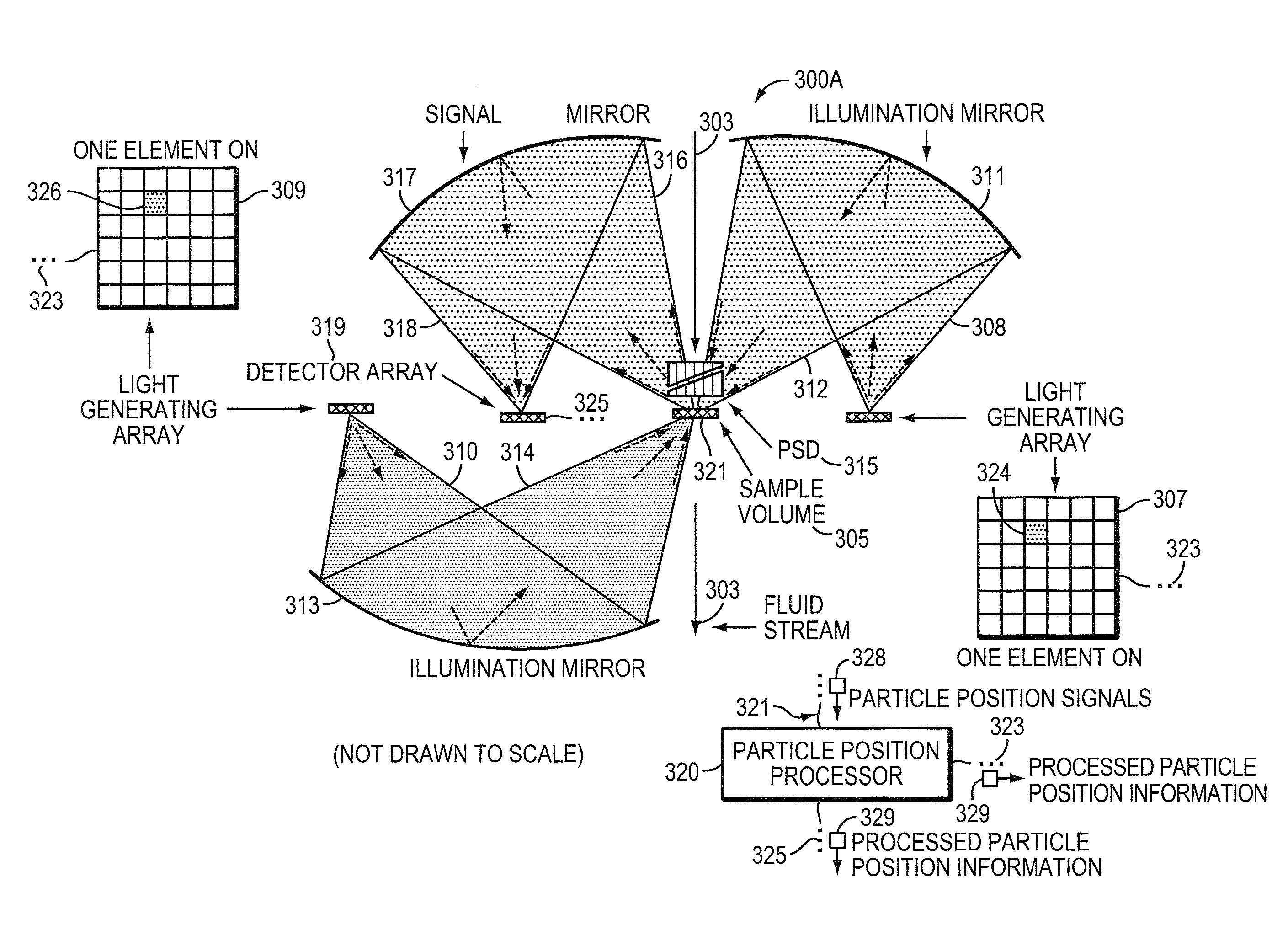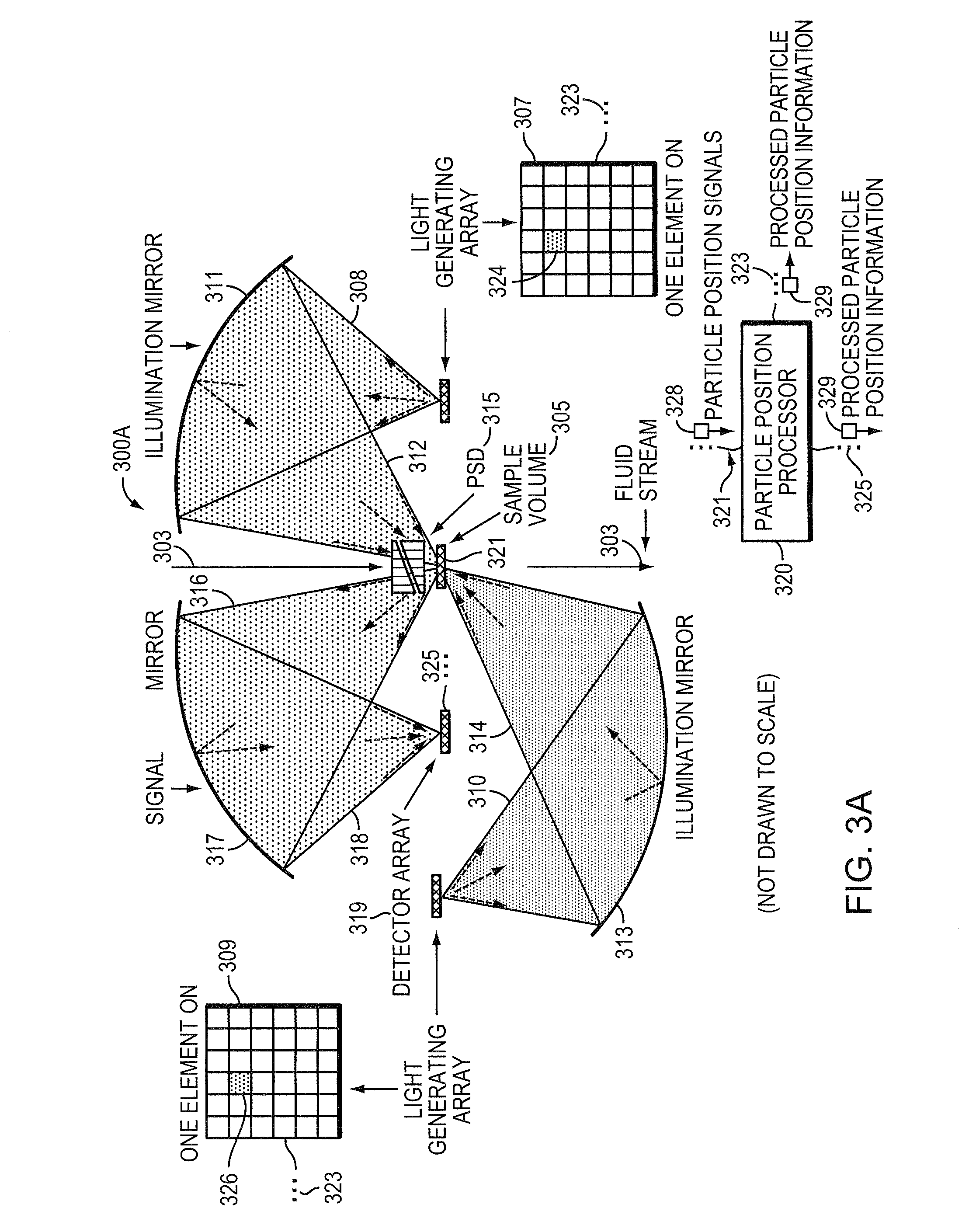Method and apparatus for detecting and discriminating particles in a fluid
a particle detection and fluid technology, applied in the direction of optical radiation measurement, luminescent dosimeter, instruments, etc., can solve the problems of high voltage (about 1000 volts) for proper operation, voltages can be dangerous to people, and require protective measures, so as to improve detection versatility, reduce cost, and improve detection efficiency
- Summary
- Abstract
- Description
- Claims
- Application Information
AI Technical Summary
Benefits of technology
Problems solved by technology
Method used
Image
Examples
Embodiment Construction
[0026]A description of example embodiments of the invention follows.
[0027]FIG. 1 provides an example 100 of a particle detection system 101. The particle detection system 101 may be situated to detect particles 104 in an air vent system 105 of a building 103. The particle detection system 101 includes an inlet (not shown) in which an airflow enters the particle detection system 101. An outlet 106 may be used as a pathway to shunt the airflow from the detection system 101. The detection system 101 may be used to control air duct valves within the building in order close off the building from outside air or from other parts of the building if particles 102 detected are deemed unsafe for breathing.
[0028]As another example, a liquid stream may also need to be evaluated. For instance, a water reservoir may need to be continuously monitored to ensure harmful particles are not introduced into a water supply.
[0029]FIG. 2 provides an example 107 of a particle detection system 111 detecting p...
PUM
 Login to View More
Login to View More Abstract
Description
Claims
Application Information
 Login to View More
Login to View More - R&D
- Intellectual Property
- Life Sciences
- Materials
- Tech Scout
- Unparalleled Data Quality
- Higher Quality Content
- 60% Fewer Hallucinations
Browse by: Latest US Patents, China's latest patents, Technical Efficacy Thesaurus, Application Domain, Technology Topic, Popular Technical Reports.
© 2025 PatSnap. All rights reserved.Legal|Privacy policy|Modern Slavery Act Transparency Statement|Sitemap|About US| Contact US: help@patsnap.com



